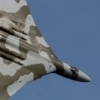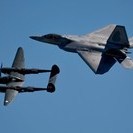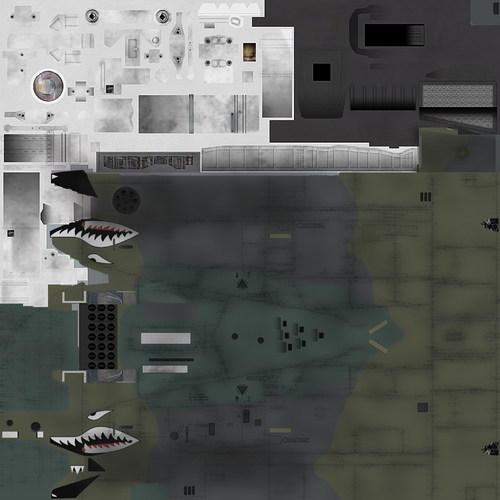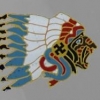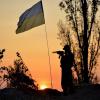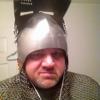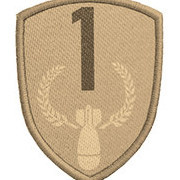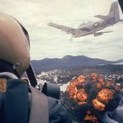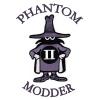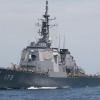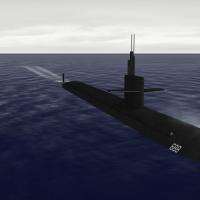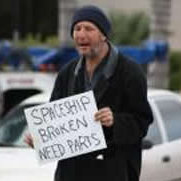Leaderboard
Popular Content
Showing most liked content on 09/29/2023 in all areas
-
8 points
-
4 pointsParis Orly (WIP), run- and taxiway layout made after an air photo from 1956. I had to make the airport a little bit smaller, so that it fit into the 2 x 2 km tile.
-
4 points
Version 1.0.0
29 downloads
These are my .psd templates (2048x2048) for the stock Thirdwire SF2E A-10 and A-10_78 (use the pave penny texture). Contains lines, rivets, aircraft parts, weathering, stencils, nose art, camo patterns and the UV layout. Use the 'A-10_3_4' .psd file to create the skin for both left and right wings. Jimbib -
3 points
-
3 points
-
2 points
-
2 points
-
2 points
-
2 points
-
2 pointsGloster Gale F.Mk.I - No.258 Squadron, Tiger Force, RAF Pacific Air Command, 1945 The Air Ministry Specification F.5/34 (which would eventually lead to the Hawker Hurricane and Supermarine Spitfire) was an ambitious request for a single-seat monoplane interceptor fighter with an enclosed cockpit and retractable main landing gear plus the then heavy armament of at least six and preferably eight .303 inch Browning machine guns with 300 rounds per gun. The response by the Gloster Aircraft Company was never officially named and was simply referred to as the Gloster F.5/34 but it was a modern monoplane of monocoque construction with a Duralumin stressed-skin fuselage, wings and tail and a fabric covered rudder, ailerons and elevators. The armament of eight Browning machine guns was mounted in the wings outside of the propeller disc and power for the F.5/34 was provided by a Bristol Mercury IX nine-cylinder radial engine rated at 840 hp neatly enclosed in a streamlined cowling and turning a three-bladed de Havilland controllable-pitch propellor. However, the design team at Gloster's were deeply involved with the development and production of the Gauntlet and Gladiator and progress was on the F.5/34 was so slow that the first prototype would not take to the air until December 1937 by which time the Hurricane was just entering service with the RAF and the Spitfire was in production too. The second prototype followed quickly enough and whilst the two F.5/34 prototypes displayed good all-round handling characteristics unfortunately no production order was received. The Air Ministry encouraged Gloster to respond to Specification F.18/37 for a fighter which would be able to achieve at least 400 mph at 15,000 feet with an even heavier armament of twelve Browning machine guns with 500 rounds per gun and a service ceiling of 35,000 feet. This was a tough requirement to meet but it was made even harder by the Air Ministry (perhaps already forecasting a shortage of Rolls-Royce Merlin engines) instructing Gloster to use the Bristol Hercules II supercharged radial engine with a projected power output of 1,375 hp that was significantly lower than the 1,760 hp of the Rolls-Royce Vulture 24 cylinder liquid-cooled piston engine planned for the Hawker Tornado. The Gloster design team realised that they were unlikely to meet the speed and armament requirements of Specification F.18/37 on the projected power output of the Hercules II engine so politely declined to tender but continued to refine their F.5/34 design as a private venture. Allocated the project number P.177 the Gloster design team became focused on accommodating the larger Hercules engine whilst retaining it's relatively small airframe and paid particular attention to keeping weight as low as possible. Armament was reduced to just four guns consisting of two fuselage-mounted, synchronized .50 inch AN/M2 Browning machine guns firing through the four-bladed Rotol propeller and two wing-mounted 20mm Hispano II cannon. The wing of the new P.177 was made slightly shorter when compared to the F.5/34 but Gloster were able to use an improved NACA 63-215 airfoil shape with a reduced thickness to chord ratio and also switched to a fully-enclosed inwards retracting main landing gear. Whilst the empty weight had increased considerably the actual power to mass ratio had increased from 0.20 hp/lb to 0.25 hp/lb and the beautifully cowled Hercules engine and longer airframe promised lower drag due to the improved fineness ratio. As part of the Hawker Aircraft Group, Gloster's were again bogged down with production of Hurricanes and Typhoons and were further side-tracked when a large part of the design team were split off to focus on the E.28/39 'Gloster-Whittle' jet and the F.9/40 jet fighter based on a far-sighted brochure submission dating back to August 1940. However, the small P.177 project team continued to make progress and on August 18th,1941 a contract was issued by the Air Ministry for "two P.177 prototypes with Hercules VI radial engines" a move motivated by combat reports from the Middle East and North Africa that clearly showed the performance degradation of the RAF's Hurricanes and Spitfires when fitted with the Vokes air filter. With the move from project to prototype, the Gloster board approved the name of Gloster Gale which fitted in with the naming convention of the parent company Hawker Aircraft Group (e.g. Hurricane, Tornado, Typhoon and Tempest). The prototype Gloster Gale (HV268) was powered by the Hercules VI which delivered 1,650 hp and made it's maiden flight from Hucclecote on May 2nd, 1942 flown by Michael Daunt who reported it to be "a pleasant and manoeuvrable aircraft with no major handling faults". The second prototype (HV269) was much more representative of an operational aircraft with various of items of service equipment including armament and the Type I Mk.III reflector gunsight. During the summer and Autumn of 1942 both prototypes were flown by test pilots from Gloster and RAF pilots and it was clear that the Gale was a thoroughly competent fighter aircraft but did not offer any real advantages over the RAF's frontline fighters in Europe. However, the Air Ministry believed that it could be of use overseas and awarded Gloster's a production contract for 300 Gloster Gale F.Mk.I's with tropical equipment for service with the RAF in the Far East. Entering service with No.258 Squadron based at Alipore, India in December 1943 the squadron began operations in January 1944. Initially flying fighter escort and ground-attack missions as part of the RAF's Third Tactical Air Force the squadron was withdrawn to Ceylon in June 1945 and then moved to Okinawa as part of the RAF's Tiger Force providing airfield defence until the Japanese surrender in the Spring of 1946. Skin Credit: Charles
-
2 points
-
1 point
-
1 pointWith the new (old) Microprose now obtaining the rights to Falcon 4 do you think they will update it even more than BMS have done? I am just getting back into Falcon 4. I just about to install BMS latest to see how it's improved. And just for old times sake I climbed into my old dusty attic where I keep just about every boxed PC flight sim ever made and dug out my original Falcon 4 big box. I am surprised how heavy it is too. Those were the days. I bought this falcon 4 in 1998 whilst serving in Cyprus in the RAF. I am looking forward to Microprose updating some of my old favourites.
-
1 pointThe last screenshots of my updated Kuril Islands terrain, before i had blown up the terrain accidently, beyond repair.
-
1 pointView File SF2 3rdW A-10 Templates These are my .psd templates (2048x2048) for the stock Thirdwire SF2E A-10 and A-10_78 (use the pave penny texture). Contains lines, rivets, aircraft parts, weathering, stencils, nose art, camo patterns and the UV layout. Use the 'A-10_3_4' .psd file to create the skin for both left and right wings. Jimbib Submitter Jimbib Submitted 09/29/2023 Category Skin Templates
-
1 point
-
1 point
-
1 pointit was the joke around the theme. sure no any panspermia. We're just a B-1B Lancer bomber's dream. When he will wake up we all disapear. Me, you, Wrench, topic starter and this site , all these useless mods and the game itself
-
1 point
-
1 point
-
1 pointBrilliant!! A beautiful-looking aircraft and a great back-story, thanks Spinners.
-
1 point
-
1 point
-
1 point
-
1 point
-
1 pointI know that no words of encouragement help. Just live through it. my condolences. It's horrible.
-
1 pointGetting off the deck is the easy part. There's always a critic in the audience waiting to blow up your performance.... I had some operator control issues on the landing.... Kinda drifted on the touchdown Talk about getting it stopped at the Last Second......
-
1 pointBut you got back on the deck with the mighty Rhino. Definitely more work than landing the 'Cat.
-
1 point
-
1 pointPienso lanzarlos algún día con el mapa de Malvinas fotorrealista junto con los modelos nuevos de A4 B,C,Q, Súper Etendard, Sea Harrier, Mirage III EA ,DA , Dagger A , B y Pucara
-
1 point
-
1 pointthe new F-4E model is coming hopefully before the year ends , F-4E up to F-4E_78 are done including the respective cockpits always good to look at the pictures , just notice a small problem on the walkway outline on the front / air intake ( is fixed already )
-
1 point
-
1 point
-
1 point
-
1 point
-
1 point
Version 1.0
556 downloads
This model represents the Los Angeles class, in service from 1976 to present. The Los Angeles is America's most widely produced nuclear attack sub, with a long service history and proven design. This package contains two versions of the Los Angeles: Original version (688) commissioned in 1976, armed with Harpoon missiles (deployed from its four torpedo tubes). Improved version (688i) commissioned in 1985, using Harpoons, plus Tomahawk missiles in twelve vertical launch tubes. Note that the initial batch of eight "Flight II" VLS-equipped subs have been grouped together with the 688i models for simplicity's sake, as any performance differences can't really be modelled in this series. If there is sufficient demand for it, I'll made separate mods for each flight. Each version includes a full names.ini list, in case you want to use these boats in a task force, plus individual decal sets for each boat if you need to place them as single objects. SF2: North Atlantic is required for this mod as it uses some stock number decals. Please see the readme for full details, credits, and instructions for use. If you have any questions, comments, concerns, or constructive criticisms regarding this model, please do not hesitate to contact me. Thank you! -
1 point
Important Information
By using this site, you agree to our Terms of Use, Privacy Policy, and We have placed cookies on your device to help make this website better. You can adjust your cookie settings, otherwise we'll assume you're okay to continue..



